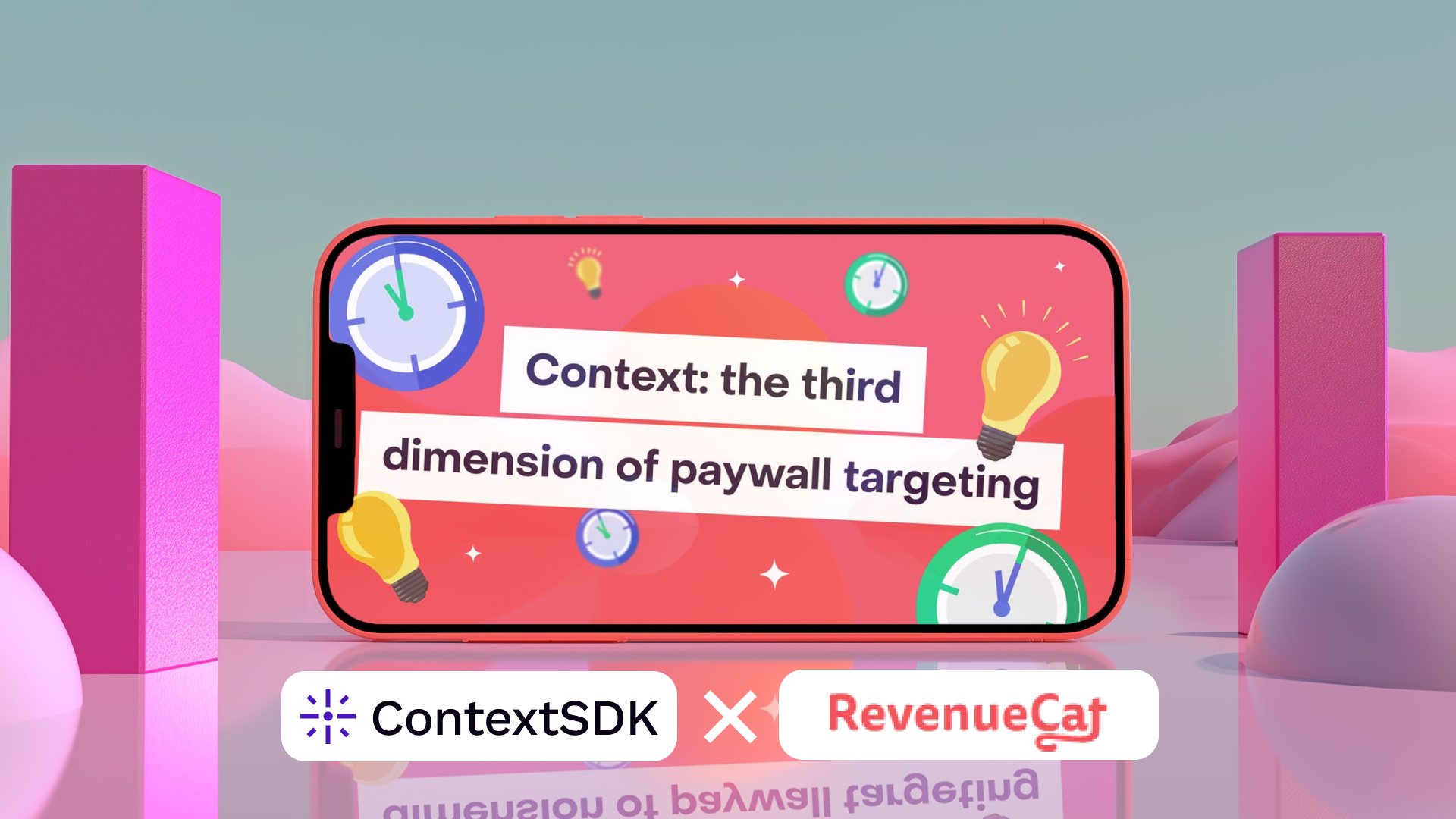AdverTiming: How Ad Timing Impacts Ad Effectiveness and User Experience


Introduction: Why Timing Matters in Social Ads
Social media platforms rely on advertising revenue, but showing too many ads at the wrong moments can hurt user experience. Research has found that excessive or ill-timed ad exposure leads to user fatigue and frustration. Traditionally, ad targeting has focused on who the user is (demographics or inferred interests), rather than when to show the ad. This static approach not only risks privacy intrusion but also ignores the dynamic context of user behavior. The “AdverTiming” study (CHI 2021) addresses this gap by examining how the timing of ads on Snapchat’s Discover feed affects their performance. The core idea is that balancing ads with other content - and choosing the right moment to serve them - can improve ad effectiveness without compromising user experience.
Ad Timing Effects on CTR and Watch Time
A key finding of the AdverTiming research is that delivering ads at a user’s preferred times dramatically boosts engagement metrics. In a quasi-experimental analysis of 100,000 Snapchat users, the researchers identified each user’s “preferred hours” - times of day when that user tended to watch ads longer or interact with them more. When ads were shown during these optimal periods, both click-through rates (CTR) and ad watch time rose significantly. In fact, ads timed to a user’s preferred hours saw roughly 50% higher ad viewing duration and CTR compared to ads shown at non-preferred times. This means users were far more likely to watch the ad and swipe up (click) when the timing aligned with their receptive moments. Figure 5 of the paper shows that the treatment group (ads delivered at preferred times) outperformed the control group in a majority of user segments, confirming that ad timing influences effectiveness across the board.
Conversely, ads delivered at less opportune moments (e.g. when a user is not in a receptive state) had poorer outcomes and risked negative reactions. The study notes that ads shown during a user’s less-preferred hours tend to be less well-received and can even feel more intrusive or frustrating to users. In other words, mistimed ads not only yield lower CTR or watch time, but they may also harm the user’s experience by interrupting them at the wrong time. These findings underscore that “when” an ad is shown can be as crucial as “who” sees it - timing can make the difference between an engaging ad and an annoying one.
User Receptivity Patterns: Real-World Behavior and Time of Day
Why does timing matter so much? The AdverTiming research suggests it’s because user receptivity to ads varies with real-world behavioral rhythms and context. People use social apps in different modes throughout the day - sometimes casually browsing with idle curiosity, other times purposefully tapping and swiping with intense focus. The study found that each individual has distinct patterns in their daily app usage and attention levels, leading to different “peaks” of ad receptiveness. One user might be more open to ads late at night when relaxing, while another responds better to ads in the afternoon lull. In fact, prior work has noted that time-of-day and circadian factors affect how deeply people process information and their variety-seeking behavior. AdverTiming builds on this by confirming that different users indeed have different preferred times for ad consumption, rather than a one-size-fits-all “best time” for everyone.
Importantly, the research linked momentary in-app behaviors to ad receptivity. It’s not only the clock time that matters, but also what the user is doing on the platform at that moment. The study measured several in-situ behavioral signals during each user session - including session duration (how long the user spends in one app session), activity level (frequency of taps/swipes), interactivity (engagement with interactive content), interaction diversity (variety of content interactions), distractedness (pauses or focus breaks), and extra-socialness (engaging with social features like sharing or chatting). The analysis revealed clear patterns in how these factors correlate with ad effectiveness:
- During highly active or interactive sessions, users were more likely to skip or ignore ads. If a user is rapidly tapping through content or interacting with friends, an ad inserted at that moment feels more disruptive, leading to lower ad reception. The implication is that when a user is “in the zone” actively engaging, they have less patience for ads.
- In contrast, during longer, less active sessions - for example, a user passively scrolling when bored - ads performed better. A user in a slower browsing mode is relatively more receptive, perhaps because the ad provides a welcome diversion or they have more attention to spare. The study suggests these lower-activity moments, often occurring at a user’s less-preferred content times, can actually handle a higher ad load without annoying the user.
Crucially, the optimal ad timing is personalized. The aggregate data showed little variance in ad performance by hour of day when looking at all users together. But once users were clustered by similar behavior patterns, distinct time-of-day preferences emerged (visualized as heatmaps of ad reception by hour for different user clusters). This means population-wide averages can mask individual peaks and troughs in ad receptivity. One user’s prime ad moment might be another user’s worst time. Thus, effective ad timing requires understanding each user’s rhythm - both their daily schedule and their immediate in-app state.
Improving Ad Targeting with Timing and Context Insights
The insights from AdverTiming point toward more nuanced and context-aware ad targeting strategies. Instead of a “blanket approach” that shows ads at fixed intervals or counts (e.g. an ad every N stories no matter what), platforms can leverage timing and session context to allocate ads dynamically. The research team demonstrated this with a simulation of different ad allocation strategies using Snapchat’s platform data. They asked: What if we reallocate ads based on the study’s findings? The simulation tested reducing ad frequency for users who were being overloaded and redistributing those ads to times/users with lower exposure, guided by the “preferred hour” and “session behavior” insights.
The results were promising. By timing ads to when users are less likely to feel interrupted, the platform could achieve the same (or greater) total ad engagement with fewer ads overall. In the simulation, overall ad value (a metric combining ad watch time and the number of ads served) increased by over 7% when using a preferred-time-based ad allocation strategy compared to a baseline policy. At the same time, the distribution of ad exposure across users became more balanced (lower variance), meaning the heaviest-ad-exposed users saw relief while lighter-ad-exposed users saw a bit more, leveling out the experience. In short, smarter timing allowed the platform to get more bang for its buck – maintaining or improving engagement metrics while actually showing fewer ads to those who were oversaturated. This kind of smart allocation could let platforms reach revenue goals with less clutter, which is a win-win: users enjoy a better experience, and advertisers still get strong results.
Notably, these improvements were achieved using only in-app timing and behavior signals. This opens the question: if ad delivery logic can be optimized so much just by knowing when a user is in a receptive mood on the platform, what if we add even more context signals to the mix? This is where real-world context comes in.
The AdverTiming study’s approach could be extended by incorporating additional on-device signals about the user’s current situation to fine-tune ad timing even further. For example, beyond observing how active a user is in the app, imagine also considering the user’s physical context: are they walking, sitting at home, or even lying in bed? On-device signals can detect certain aspects of this context – whether the user is in transit or stationary, the ambient environment, etc. If the app knows that a user is physically on-the-go (say, walking in a busy area), it might infer that the user’s attention is divided and that a lengthy ad would likely be skipped. Conversely, if the user is idle – e.g. sitting or relaxing late at night – they might be more open to a longer ad or an interactive promotion. In essence, layering real-world context signals on top of in-app behavior can paint a fuller picture of when the user is truly “ready” to engage with an ad.
Initial evidence suggests this could be a powerful enhancement. Prior research in mobile marketing has shown that context like environment and activity can significantly influence ad response. For instance, one study found that commuters in a crowded subway train were about twice as likely to respond to a mobile offer compared to those in a less crowded train. The reason? In a crowded, hectic environment people often turn inward to their phones – a well-timed ad can actually be a welcome distraction. This example illustrates that factors outside the app (crowdedness, motion, location, etc.) affect whether an ad hits the mark. By the same token, a context-aware system could detect, say, that a user just started a workout session (not an ideal time for an interstitial ad!), or that they are unwinding with music at home (a gentler ad might be fine).
The AdverTiming study already proves that paying attention to users’ immediate state — even just their in-app state — yields better outcomes. It stands to reason that an even richer set of signals about the user’s current context would further improve ad targeting. Modern smartphones are packed with sensors and context cues, and our well-designed ContextSDK can harness those (e.g. determining if a user is walking, driving, or in a low-light environment). By integrating these signals (all privacy-safe, on-device data points) into ad delivery decisions, platforms can push context-aware advertising to the next level. The underlying principle is the same as in AdverTiming: show ads when the user is most receptive, given what they are doing right now.
The study’s recommendations for implementation were quite granular. For example, during a user’s less-preferred times (when their overall ad receptivity is typically lower), the platform should increase ad delivery only if the session context is favorable – i.e. the user has been browsing for a long duration with low activity and low interaction diversity (suggesting they are passively consuming content). Those conditions indicate the user might tolerate or even appreciate an ad insertion at that moment. On the other hand, during a user’s peak preferred times (when they’re usually receptive), the platform should still hold back ads if the session is highly engaging – e.g. a short, intense session with lots of taps or a flurry of social interactions. In such moments, an ad could break the flow and irritate the user despite it being an otherwise good time of day for that person. By increasing ads only in the right circumstances and decreasing ads in potentially disruptive circumstances, the ad delivery becomes truly context-adaptive.
In summary, the study advocates a shift from blunt, one-size-fits-all ad insertion rules to contextual ad targeting: show ads when the user is in a receptive state, not just based on who they are or what content they like. This approach was shown to raise CTR and watch time while also mitigating the risk of annoying the user. Notably, these gains come without any changes to the ad creatives themselves – purely by smarter timing and placement. It’s a powerful reminder that real-world context (time and user mindset) is a crucial factor in ad effectiveness, often overlooked in ad tech. The AdverTiming research essentially provides proof that leveraging in-the-moment user context works; building on that with even more context signals (like those our ContextSDK captures) could make this strategy even more impactful for the advertising industry.
Privacy-Preserving Personalization and Ethical Implications
A significant takeaway from AdverTiming is that we can improve ad targeting without exploiting personal identities or intrusive personal data. The research was intentionally designed with privacy in mind. All the user data used – timestamps, interaction counts, etc. – were de-identified and aggregated, with no personally identifiable or demographic information involved. The model doesn’t need to know who the user is (age, gender, interests, etc.); it only cares about how the user is behaving on the platform in the moment. This person-centric but privacy-preserving approach relies on short-term behavioral patterns (recent weeks of usage) rather than long-term profiles. As the authors note, long-term personal data not only raise privacy concerns but also become stale as user behavior changes over time. By contrast, focusing on a user’s current context and recent sessions is both more adaptive to their changing needs and more respectful of privacy.
Implications: Real-World Context as the Next Frontier in Ad Delivery
The AdverTiming research highlights a key principle for digital marketers and platform designers: real-world context matters in advertising. By acknowledging that users have natural rhythms and momentary moods, we can serve ads in a more human-centered way. This study focused on Snapchat’s Discover feed, but the lessons are broadly applicable to other social media and content platforms. Any system that intermixes content with sponsored posts can benefit from asking not just “who is the user and what do they like?” but also “when and how is this user engaging right now?”. The findings suggest that even a relatively small window of user data (a few weeks or just the current session) contains rich signals about receptivity. Tapping into those signals can increase effectiveness (more clicks, longer views) and simultaneously reduce the need for high ad volume or invasive targeting.
Looking ahead, smarter timing of ads could mean higher ROI for advertisers and better retention of users. If platforms can achieve the same revenue with fewer, better-timed ads, users are less inundated and more satisfied. This directly addresses the top reasons users dislike ads – intrusiveness and disruption. By showing ads when users are least likely to feel interrupted, platforms maintain a more equitable user experience even in an ad-supported model. In the long run, this approach can help sustain the ad-driven ecosystem in a more user-friendly manner, bridging the gap between revenue goals and user happiness.
For us, these insights validate the path of contextual signaling we’ve been championing. AdverTiming’s success is essentially a proof-of-concept that context-aware ad delivery works. It used in-app behavior as the context; the next frontier is to incorporate real-world context into that equation. Imagine an ad delivery system that knows not only that this user likes sports cars, but also that right now the user is on their lunch break – a prime moment to show a quick, entertaining ad. Or consider a user who typically isn’t receptive in the morning, but whose phone sensors indicate they’re currently idle and stationary (perhaps waiting for a train) – the system might take a chance and serve an ad, and based on AdverTiming’s logic, it could very well succeed because the context is favorable. This level of nuance in ad targeting represents the next big step for the industry.
In conclusion, the AdverTiming study provides compelling evidence that timing and context are crucial levers for ad effectiveness on social platforms. Ads perform best when delivered at the moments users are most open to them – something that requires understanding real-world usage patterns and in-the-moment behavior. Incorporating these insights can lead to a more balanced advertising strategy that respects users’ time and attention. Perhaps most importantly, it shows that we can achieve personalization through context without violating privacy, by using short-term, anonymized data instead of extensive personal profiles. For anyone looking to improve ad targeting (or to write about the future of ad tech), the message is clear: it’s time to treat timing as a first-class parameter in ad delivery. And as this research suggests, when ads arrive at the right time (and in the right context), everybody wins – users, advertisers, and platforms alike.






